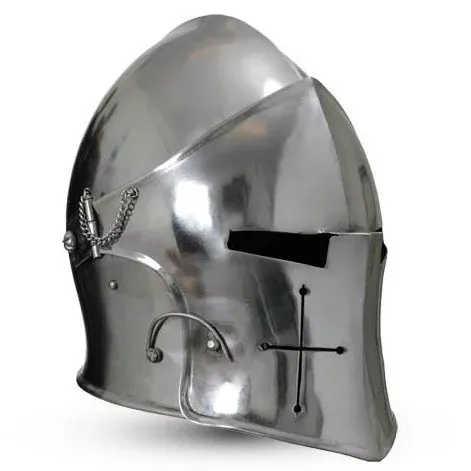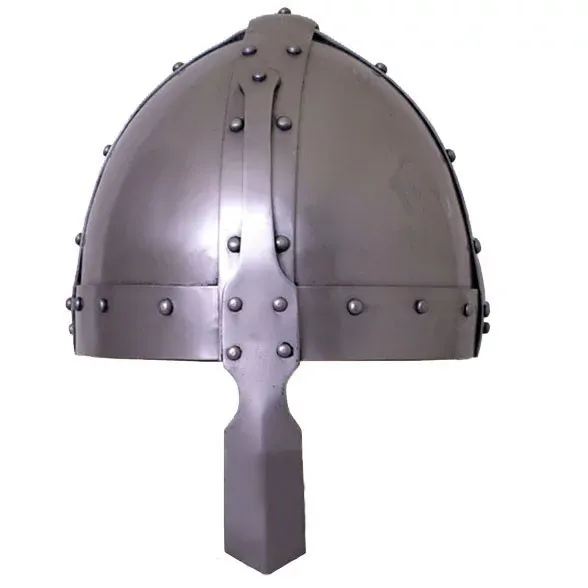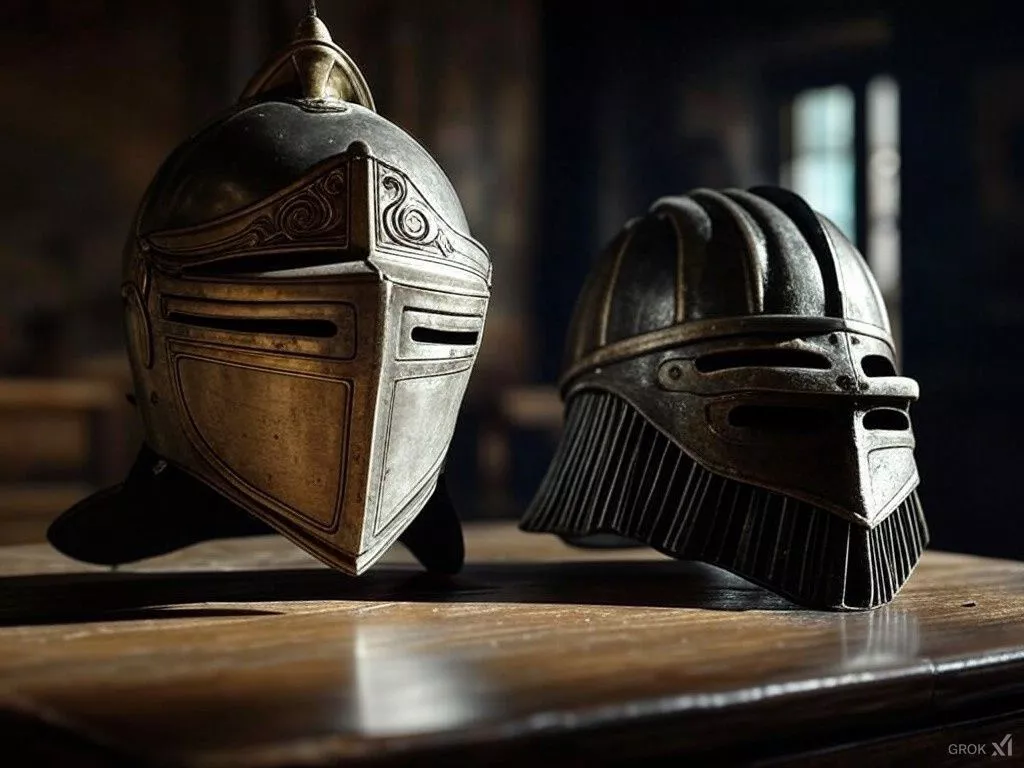Bascinet Helmet Vs. Spangenhelm Helmet
During the Middle Ages, the development of armor was vital for the protection of warriors on the battlefield. Among the most notable defensive elements, helmets played a fundamental role. In this article, we will explore a detailed comparison between two of the most iconic helmets of this era: the bascinet and the spangenhelm. We will analyze their characteristics, advantages, disadvantages, evolution, and the impact they left on history.
Design and Features
The Bascinet Helmet
The bascinet is easily recognizable due to its rounded shape and integral coverage, protecting both the head and neck of the warrior. This design stood out during the late medieval period for its combination of protection and mobility.

- Material: Made primarily of steel. Early versions were crafted from forged iron.
- Flip-up visor: Featured a mobile visor that allowed for adjusting protection levels as needed.
- Protection: Its structure fully covered the head and neck.
Advantages:
- Provided integral protection, significantly reducing damage from cuts and blows.
- Its compact design allowed for greater mobility compared to other closed helmets.
Disadvantages:
- Its visor could limit peripheral vision.
- The lack of ventilation could cause discomfort during prolonged combat.
- Heavier models led to fatigue after extended use.
The Spangenhelm Helmet
The spangenhelm, also known as the segmented helmet, gained popularity between the 6th and 11th centuries. Its modular design made it easier to construct, offering an economical and effective option.

- Structure: Made up of metal strips joining various steel or bronze plates.
- Conical shape: Designed to deflect blows to the sides rather than absorb them directly.
- Options: Some models included nasal protection and cheek flaps made of metal or leather.
Advantages:
- Ease of manufacturing thanks to its segmented design.
- Offered additional protection options, such as nasal or ocular protection.
Disadvantages:
- Unlike the bascinet, it did not provide integral protection.
- The joints between segments made its structure more vulnerable at certain points.
Evolution and Historical Use
Bascinet
The bascinet was developed in response to the needs of infantry and cavalry, becoming a symbol of medieval armor from the 14th century onward. However, with the advent of more effective firearms, it lost relevance and was replaced by more robust closed helmets, like the cabasset, by the late 15th century.
Spangenhelm
The spangenhelm originated earlier, arriving in Western Europe through nomadic Iranian tribes like the Scythians and Sarmatians. It gained popularity during the Early Middle Ages until simpler designs, such as nasal helmets, became dominant.

Legacy and Relevance
Bascinet
The bascinet's design laid the foundation for future military helmets. Its influence can still be traced in steel helmet models used during world wars. Moreover, its focus on balancing protection and mobility continues to be relevant in the modern production of protective equipment.
Spangenhelm
Although surpassed by other designs, the spangenhelm left its mark on military history. Its segmentation inspired later technologies in various cultures, showcasing its adaptability as a key feature.
| Features | Bascinet | Spangenhelm |
|---|---|---|
| Protection | Integral | Partial |
| Material | Steel | Steel or bronze |
| History | Late Period | Early Middle Ages |
Both the bascinet and the spangenhelm represent the ongoing evolution of military technology during the Middle Ages, each with its strengths and limitations. These helmets not only protected warriors of their time but also established a lasting legacy in the history of armor and military design.
















